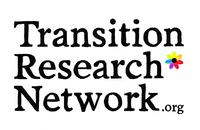Memorandum of Understanding
For formal research collaborations between a Transition network or initiative and an external researcher such as an academic, it can be useful to draw up a Memorandum of Understanding.
+problem
Expectations of different partners can be unclear in research, and this can follow through to affect the benefits that each partner gets from the research.
+background
A Memorandum of Understanding (MoU) is a written agreement that is colectivelty negotiated between research partners. Its purpose is to protect the interests of each partner and clearly state expectations around ownership and benefits that will come from the research.
A MoU can be as brief or lengthy as is needed, and may cover the nature of the research and any collaboration, the sharing of benefits and outputs, issues of ownership and authorship, etc. The process of discussing the MoU is in itself useful.
MoUs replace contracts that are often drawn up in research and/or consultancy, though they may include some similar information, and have proven valuable in other contexts where research partners represent groups that are historically disavantaged in terms of power and a stake in knowledge production (particularly indigenous research).
Can we give a case study – some examples of MoUs that have been used?
+solution
For formal research collaborations between a Transition group and an external researcher such as an academic, it can be useful to draw up a Memorandum of Understanding.
